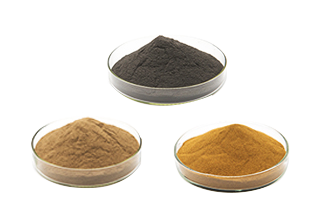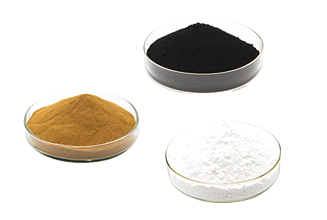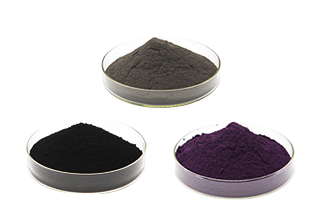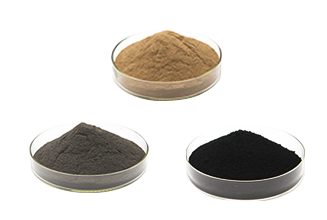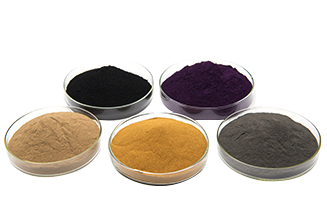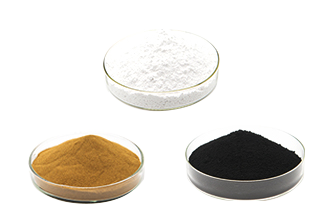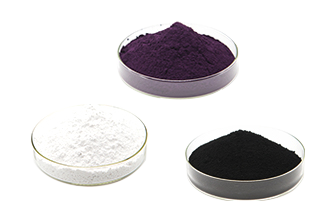Chemical preparation method of nano powder
The preparation method of nano powder has always been a hot technology in the powder industry. Our common powder processing is mechanical crushing processing method. However, this processing method is usually very difficult to be competent for the production and processing of nano powders, and it is difficult to find suitable crushing equipment. This article will introduce a special kind of nano powder processing technology-chemical method.
1. Chemical precipitation method:
The precipitation method mainly includes co-precipitation method, uniform precipitation method, precipitation method with polyol as the medium, precipitation conversion, direct precipitation method, etc.
Co-precipitation
The method of adding precipitation agent to the solution containing multiple cations to completely precipitate the metal ions is called the co-precipitation method. Co-precipitation method can be used to prepare PZT-based electronic ceramics such as BaTiO3, PbTiO3, and powders such as ZrO2. With traditional solid-phase reaction Compared with the method, the co-precipitation method can avoid the introduction of harmful impurities that are unfavorable to the material performance. The resulting powder has higher chemical uniformity, finer particle size, narrower particle size distribution and a certain morphology.
Homogeneous precipitation method
Adding a substance that can slowly generate a precipitating agent in the solution to make the precipitation in the solution evenly appear, called the uniform precipitation method. This method overcomes the problem of directly adding a precipitating agent to the solution from the outside and causing the precipitant in the hydrothermal synthesis reactor. Local inhomogeneity. Most of this method uses the thermal decomposition of urea in the metal salt solution to generate the precipitation agent NH4OH, which promotes the uniform formation of the precipitation. The prepared powders are Al, Zr, Fe, Sn hydroxides [12-17] and Nd2(CO3). ) 3 etc.
Polyol precipitation method
Many inorganic compounds are soluble in polyols. Because polyols have a higher boiling point, which can be greater than 100°C, they can be used for high-temperature forced hydrolysis to prepare nanoparticles. [20] For example, Zn(HAC)2·2H2O is soluble in diethyl alcohol (DEG), forced hydrolysis at 100-220°C can produce monodisperse spherical ZnO nanoparticles. For example, forced hydrolysis of acidified FeCl3-ethylene glycol-water system can produce uniform Fe(III) oxide colloidal particles. .
Precipitation transformation
This method controls particle growth and prevents particle agglomeration by changing the concentration of precipitation conversion agent, conversion temperature and surface active agent according to the difference in solubility between compounds. For example: Cu(NO3)2·3H2ONi(NO3)2·6H2O is used as raw material , Using Na2CO3 and NaC2O4 as precipitating agents, adding a certain amount of surfactant, heating and stirring, respectively, using NaC2O3 and NaOH as precipitation transforming agents to prepare CuO, Ni(OH)2, and NiO ultrafine powders. The method has a short process flow and simple operation, but the prepared compounds are limited to a few metal oxides and hydroxides.
2. Chemical reduction method
Aqueous reduction method
Using reducing agents such as hydrazine hydrate, glucose, sodium borohydride (potassium), etc., prepare ultrafine metal powder or amorphous alloy powder in aqueous solution, and use polymer protection PVP to prevent particle agglomeration and reduce crystal grain size. Fe-Co-B (10-100nm), Fe-B (400nm), Ni-P amorphous alloys were prepared by aqueous solution reduction method using KBH4 as a reducing agent. The advantage of the solution reduction method is that the obtained particles have good dispersibility, the particle shape is basically spherical, and the process can also be controlled.
Polyol reduction method
Recently, the polyol reduction method has been developed to synthesize fine metal particles Cu[33], Ni, Co[34], Pd, Ag. The process mainly uses metal salts that are soluble or suspended in ethylene glycol (EG), one In alcohols such as diethylene glycol (DEG), when heated to the boiling point of the alcohol, it undergoes a reduction reaction with polyols to form metal precipitates. By controlling the reaction temperature or introducing an external nucleating agent, nano-sized particles can be obtained.
Gas phase reduction
This method is also a common method for preparing micropowders. For example, the metal composite oxide is reduced with 15% H2-85% Ar to prepare CuRh, g-Ni0.33Fe0.66 and the like with a particle size of less than 35nm.
Carbothermic reduction method
The basic principle of the carbothermic reduction method is based on carbon black and SiO2 as raw materials, under the protection of nitrogen in a high temperature furnace, the carbothermic reduction reaction is carried out to obtain fine powder, and different products can be obtained by controlling the process conditions. Currently, Si3N4 and SiC are more researched. Preparation of powder and SiC-Si3N4 composite powder.
3. Sol-gel method
The sol-gel method is widely used in the preparation of metal oxide nanoparticles. The precursor can be metal alkoxide or non-alkoxide. The essence is that the precursor is hydrolyzed into a sol under certain conditions, and then made into a gel, and the desired nano particles are prepared after the heat treatment of the dried nano material. In the preparation of oxides, composite alkoxides are often used as precursors. In the ethanol solution of Ti or other alkoxides, a second metal ion (such as Ba, Pb, Al) is introduced with alkoxides or other salts to obtain Composite oxides, such as BaTiO3 with a particle size of less than 15nm, PbTiO3 with a particle size of less than 100nm, and AlTiO5 with a particle size of 80-300nm. The sol-gel method can greatly reduce the synthesis temperature. The solid-phase reaction for preparing (BaPb)TiO3 requires about 1000°C, which is easy to volatilize the component Pb. The temperature of the sol-gel technology is lower, and the powder surface area is 50m2/g. The diameter size is controlled at the nanometer level. Using inorganic salts as raw materials is relatively cheap. For example, using silica sol and carbon black as raw materials to synthesize high-purity b·SiC powder, reducing the reaction ag2s hydrothermal synthesis temperature, and the particle size of the product is 100-200nm, which is better than using Si(OC2H5)4 and C6H5Si(OC2H5)3 as raw materials. The cost of SiC powder is low. SnCl4·5H2O was hydrolyzed to prepare SnO2 powder with a particle size of 2-3nm.
4. Hydrothermal method
The hydrothermal method uses water as the reaction medium in the high-temperature and high-pressure reaction environment in an autoclave to dissolve normally insoluble or insoluble substances. The reaction can also be recrystallized. The hydrothermal technology has two characteristics. One is its relative Low temperature, and second, it is carried out in a closed container to avoid volatilization of the components. The preparation of powder under hydrothermal conditions includes hydrothermal crystallization, hydrothermal synthesis, hydrothermal decomposition, hydrothermal dehydration, hydrothermal oxidation, hydrothermal reduction, etc. In recent years, electrochemical thermal methods and microwaves have also been developed. The hydrothermal synthesis method combines the hydrothermal method with electric field, while the latter uses microwave heating hydrothermal reaction system. Compared with the general wet chemical method, the hydrothermal method can directly obtain dispersed and well-crystallized powder without high temperature burning. Treatment avoids the possible formation of hard agglomeration of powder. In the hydrothermal process, the crystal structure, crystal morphology and crystal grain purity of the nanoparticles are controlled by adjusting the experimental conditions. For example, using the property of metal Ti powder that can be dissolved in the alkaline solution of H2O2 to generate Ti peroxide solvent (TiO42-), hydrothermal treatment in different media can be used to prepare TiO2 nanopowders of different crystal types and nine shapes. .
5. Solvothermal synthesis method
The use of organic solvents instead of water as the medium, and the use of similar principles of hydrothermal synthesis to prepare nano-powders and non-aqueous solvents instead of water not only expand the application range of hydrothermal technology, but also can achieve reactions that cannot be achieved under normal conditions, including preparations with metastable properties. State structure of the material.
6. Thermal decomposition method
In the thermal decomposition of the meta-nitrobenzoic acid rare earth complex, the decomposition reaction is extremely rapid due to the presence of NO2 groups, so that the product particles do not have time to grow up, and nano-powders are obtained.
7. Microemulsion method
Microemulsion is usually a transparent, isotropic thermodynamically stable system composed of surfactants, co-surfactants (usually alcohols), and oils (usually hydrocarbons). Tiny "pools" in microemulsions The microemulsion particles surrounded by a monolayer composed of surfactants and co-surfactants are between a few to tens of nanometers in size. These tiny "pools" are separated from each other, which is the "microreactor". A large interface is conducive to chemical reactions [82,83] This is obviously another effective technique for preparing nanomaterials. Compared with other chemical methods, the particles prepared by the microemulsion method are not easy to coalesce, the size is controllable, and the dispersion is good.
8. High temperature combustion synthesis method
The necessary energy from the outside is used to induce a highly exothermic chemical reaction, and the system reacts locally to form a chemical reaction front (combustion wave). The chemical reaction proceeds quickly with the support of its own heat release. The combustion wave spreads throughout the system and the heat of reaction quickly decomposes the precursor, causing a large amount of gas to be released, avoiding the adhesion of the precursor due to melting, and reducing the particle size of the product.
9. Electrolysis
This method includes aqueous solution electrolysis and molten salt electrolysis. A lot of metal ultrafine powders that cannot be prepared or difficult to prepare by ordinary methods can be prepared by this method, especially metal powders with high negative charge can also be used to prepare oxide ultrafine powders. The roller cathodic electrolysis method in which the solvent is in the electrolyte, the metal ultrafine powder is prepared. The roller is placed at the junction of two liquid phases. When it is in the middle, the metal precipitation stops, and the precipitated metal is coated by the organic solution. When it is rotated into the aqueous solution, the metal precipitates again, but the metal precipitated this time and the metal precipitated last time cannot be connected due to the barrier of the organic film. Together, it is only precipitated in the form of ultrafine powder. The powder obtained by this method has high purity, fine particle size, and low cost, which is suitable for expansion and industrial production.
1. Chemical precipitation method:
The precipitation method mainly includes co-precipitation method, uniform precipitation method, precipitation method with polyol as the medium, precipitation conversion, direct precipitation method, etc.
Co-precipitation
The method of adding precipitation agent to the solution containing multiple cations to completely precipitate the metal ions is called the co-precipitation method. Co-precipitation method can be used to prepare PZT-based electronic ceramics such as BaTiO3, PbTiO3, and powders such as ZrO2. With traditional solid-phase reaction Compared with the method, the co-precipitation method can avoid the introduction of harmful impurities that are unfavorable to the material performance. The resulting powder has higher chemical uniformity, finer particle size, narrower particle size distribution and a certain morphology.
Homogeneous precipitation method
Adding a substance that can slowly generate a precipitating agent in the solution to make the precipitation in the solution evenly appear, called the uniform precipitation method. This method overcomes the problem of directly adding a precipitating agent to the solution from the outside and causing the precipitant in the hydrothermal synthesis reactor. Local inhomogeneity. Most of this method uses the thermal decomposition of urea in the metal salt solution to generate the precipitation agent NH4OH, which promotes the uniform formation of the precipitation. The prepared powders are Al, Zr, Fe, Sn hydroxides [12-17] and Nd2(CO3). ) 3 etc.
Polyol precipitation method
Many inorganic compounds are soluble in polyols. Because polyols have a higher boiling point, which can be greater than 100°C, they can be used for high-temperature forced hydrolysis to prepare nanoparticles. [20] For example, Zn(HAC)2·2H2O is soluble in diethyl alcohol (DEG), forced hydrolysis at 100-220°C can produce monodisperse spherical ZnO nanoparticles. For example, forced hydrolysis of acidified FeCl3-ethylene glycol-water system can produce uniform Fe(III) oxide colloidal particles. .
Precipitation transformation
This method controls particle growth and prevents particle agglomeration by changing the concentration of precipitation conversion agent, conversion temperature and surface active agent according to the difference in solubility between compounds. For example: Cu(NO3)2·3H2ONi(NO3)2·6H2O is used as raw material , Using Na2CO3 and NaC2O4 as precipitating agents, adding a certain amount of surfactant, heating and stirring, respectively, using NaC2O3 and NaOH as precipitation transforming agents to prepare CuO, Ni(OH)2, and NiO ultrafine powders. The method has a short process flow and simple operation, but the prepared compounds are limited to a few metal oxides and hydroxides.
2. Chemical reduction method
Aqueous reduction method
Using reducing agents such as hydrazine hydrate, glucose, sodium borohydride (potassium), etc., prepare ultrafine metal powder or amorphous alloy powder in aqueous solution, and use polymer protection PVP to prevent particle agglomeration and reduce crystal grain size. Fe-Co-B (10-100nm), Fe-B (400nm), Ni-P amorphous alloys were prepared by aqueous solution reduction method using KBH4 as a reducing agent. The advantage of the solution reduction method is that the obtained particles have good dispersibility, the particle shape is basically spherical, and the process can also be controlled.
Polyol reduction method
Recently, the polyol reduction method has been developed to synthesize fine metal particles Cu[33], Ni, Co[34], Pd, Ag. The process mainly uses metal salts that are soluble or suspended in ethylene glycol (EG), one In alcohols such as diethylene glycol (DEG), when heated to the boiling point of the alcohol, it undergoes a reduction reaction with polyols to form metal precipitates. By controlling the reaction temperature or introducing an external nucleating agent, nano-sized particles can be obtained.
Gas phase reduction
This method is also a common method for preparing micropowders. For example, the metal composite oxide is reduced with 15% H2-85% Ar to prepare CuRh, g-Ni0.33Fe0.66 and the like with a particle size of less than 35nm.
Carbothermic reduction method
The basic principle of the carbothermic reduction method is based on carbon black and SiO2 as raw materials, under the protection of nitrogen in a high temperature furnace, the carbothermic reduction reaction is carried out to obtain fine powder, and different products can be obtained by controlling the process conditions. Currently, Si3N4 and SiC are more researched. Preparation of powder and SiC-Si3N4 composite powder.
3. Sol-gel method
The sol-gel method is widely used in the preparation of metal oxide nanoparticles. The precursor can be metal alkoxide or non-alkoxide. The essence is that the precursor is hydrolyzed into a sol under certain conditions, and then made into a gel, and the desired nano particles are prepared after the heat treatment of the dried nano material. In the preparation of oxides, composite alkoxides are often used as precursors. In the ethanol solution of Ti or other alkoxides, a second metal ion (such as Ba, Pb, Al) is introduced with alkoxides or other salts to obtain Composite oxides, such as BaTiO3 with a particle size of less than 15nm, PbTiO3 with a particle size of less than 100nm, and AlTiO5 with a particle size of 80-300nm. The sol-gel method can greatly reduce the synthesis temperature. The solid-phase reaction for preparing (BaPb)TiO3 requires about 1000°C, which is easy to volatilize the component Pb. The temperature of the sol-gel technology is lower, and the powder surface area is 50m2/g. The diameter size is controlled at the nanometer level. Using inorganic salts as raw materials is relatively cheap. For example, using silica sol and carbon black as raw materials to synthesize high-purity b·SiC powder, reducing the reaction ag2s hydrothermal synthesis temperature, and the particle size of the product is 100-200nm, which is better than using Si(OC2H5)4 and C6H5Si(OC2H5)3 as raw materials. The cost of SiC powder is low. SnCl4·5H2O was hydrolyzed to prepare SnO2 powder with a particle size of 2-3nm.
4. Hydrothermal method
The hydrothermal method uses water as the reaction medium in the high-temperature and high-pressure reaction environment in an autoclave to dissolve normally insoluble or insoluble substances. The reaction can also be recrystallized. The hydrothermal technology has two characteristics. One is its relative Low temperature, and second, it is carried out in a closed container to avoid volatilization of the components. The preparation of powder under hydrothermal conditions includes hydrothermal crystallization, hydrothermal synthesis, hydrothermal decomposition, hydrothermal dehydration, hydrothermal oxidation, hydrothermal reduction, etc. In recent years, electrochemical thermal methods and microwaves have also been developed. The hydrothermal synthesis method combines the hydrothermal method with electric field, while the latter uses microwave heating hydrothermal reaction system. Compared with the general wet chemical method, the hydrothermal method can directly obtain dispersed and well-crystallized powder without high temperature burning. Treatment avoids the possible formation of hard agglomeration of powder. In the hydrothermal process, the crystal structure, crystal morphology and crystal grain purity of the nanoparticles are controlled by adjusting the experimental conditions. For example, using the property of metal Ti powder that can be dissolved in the alkaline solution of H2O2 to generate Ti peroxide solvent (TiO42-), hydrothermal treatment in different media can be used to prepare TiO2 nanopowders of different crystal types and nine shapes. .
5. Solvothermal synthesis method
The use of organic solvents instead of water as the medium, and the use of similar principles of hydrothermal synthesis to prepare nano-powders and non-aqueous solvents instead of water not only expand the application range of hydrothermal technology, but also can achieve reactions that cannot be achieved under normal conditions, including preparations with metastable properties. State structure of the material.
6. Thermal decomposition method
In the thermal decomposition of the meta-nitrobenzoic acid rare earth complex, the decomposition reaction is extremely rapid due to the presence of NO2 groups, so that the product particles do not have time to grow up, and nano-powders are obtained.
7. Microemulsion method
Microemulsion is usually a transparent, isotropic thermodynamically stable system composed of surfactants, co-surfactants (usually alcohols), and oils (usually hydrocarbons). Tiny "pools" in microemulsions The microemulsion particles surrounded by a monolayer composed of surfactants and co-surfactants are between a few to tens of nanometers in size. These tiny "pools" are separated from each other, which is the "microreactor". A large interface is conducive to chemical reactions [82,83] This is obviously another effective technique for preparing nanomaterials. Compared with other chemical methods, the particles prepared by the microemulsion method are not easy to coalesce, the size is controllable, and the dispersion is good.
8. High temperature combustion synthesis method
The necessary energy from the outside is used to induce a highly exothermic chemical reaction, and the system reacts locally to form a chemical reaction front (combustion wave). The chemical reaction proceeds quickly with the support of its own heat release. The combustion wave spreads throughout the system and the heat of reaction quickly decomposes the precursor, causing a large amount of gas to be released, avoiding the adhesion of the precursor due to melting, and reducing the particle size of the product.
9. Electrolysis
This method includes aqueous solution electrolysis and molten salt electrolysis. A lot of metal ultrafine powders that cannot be prepared or difficult to prepare by ordinary methods can be prepared by this method, especially metal powders with high negative charge can also be used to prepare oxide ultrafine powders. The roller cathodic electrolysis method in which the solvent is in the electrolyte, the metal ultrafine powder is prepared. The roller is placed at the junction of two liquid phases. When it is in the middle, the metal precipitation stops, and the precipitated metal is coated by the organic solution. When it is rotated into the aqueous solution, the metal precipitates again, but the metal precipitated this time and the metal precipitated last time cannot be connected due to the barrier of the organic film. Together, it is only precipitated in the form of ultrafine powder. The powder obtained by this method has high purity, fine particle size, and low cost, which is suitable for expansion and industrial production.
related news
-
.png) Jun 22, 2022The promise of lithium-sulphur batteries
Jun 22, 2022The promise of lithium-sulphur batteries -
.png) May 23, 2022Carbide ultra-high temperature ceramics have high melting point, high strength, high hardness and good chemical stability, and are widely used ultra-high temperature ceramic materials
May 23, 2022Carbide ultra-high temperature ceramics have high melting point, high strength, high hardness and good chemical stability, and are widely used ultra-high temperature ceramic materials -
.png) Dec 08, 2021Ultra-high temperature materials
Dec 08, 2021Ultra-high temperature materials -
.png) Nov 15, 2021Ceramic materials VS Space corrosion
Nov 15, 2021Ceramic materials VS Space corrosion

